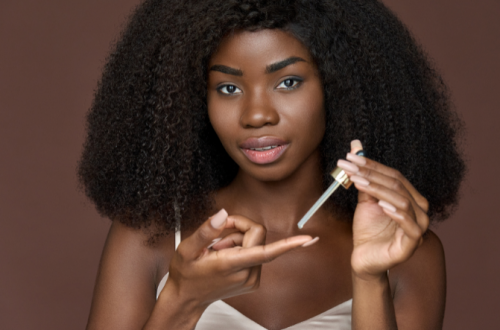
Skin care for POC – Part 1B – skin of Asian origin
Welcome to the second installment of Skincare of POC. If you haven’t read Part 1A of this series, you can find it here. This post will focus on the characteristics of Asian skin – mainly those of Northeast/Southeast Asian ancestry.

Melanin
Skin within this group can vary from lighter complexions to different shades of brown. According to the Fitzpatric scale (a scale developed to estimate the response of different skin types to UV rays), Northeastern and Southeastern Asians, on average, fall within phototypes III to IV (8) while those from South Asia have skin that lies between III and VI. As is the case with skin of African origin, Asian skin with higher phototypes will have melanosomes in the epidermis that are more widely dispersed and that create more melanin (8). The lower the phototype (lighter skin), the more clustered and smaller the melanosomes are and the less melanin they contain (3,8). In fact, clustered melanosomes were found in Asians that tend to have lighter skin such as Chinese, Japanese, and Mongolians (5). However, like African skin, it has been found that Asian light skin reacts very differently to the sun than European light skin. Research showed that in response to solar stimulating radiation, aside from some DNA damage in the epidermis, both people of African and Northeast/Southeast Asian (including those with light skin) did not have an increase in cellular damage markers such as neutrophils, active proteolytic enzymes and diffuse keranocyte activation (5). On the other hand, those of European ancestry had all these markers of cellular damage after exposure to the radiation. These results suggest that the lightest of Asian skin has some mechanism other than melanin to protect them against UV irradiation (5).

Source: https://commons.wikimedia.org/wiki/File:Darkly_pigmented_skin.jpg
Stratum corneum – the skin barrier
Asians have been found to have the highest level of ceramides in the SC in comparison to other groups (4,5). There are studies that suggest that the SC might be thinner in Asians than in other groups. Tape stripping experiments have demonstrated that it required a smaller number of tape-strippings to increase TEWL – and thus disrupt the barrier layer – in Asian skin as compared to other groups (5). Also, Asian skin was rendered the most permeable in comparison after skin stripping was performed (9).
Asian skin was found to have the highest amount of ceramides in the SC layer compared to any other group (5).

Collagen and the dermis
The dermis contained within Asians is thicker and more compact (3).

Sebum
The sebum levels in Asian skin lies between the levels found in African skin and European skin (6).
References
1. Iozumi, K. Hoganson, H.G., Panella, R., Everett, M.A,, Fuller, B.B. (1993). Role of tyronise as the determinant of pigmentation in cultured human melanocytes. The Journal of Investigative Dermatology 100(6), 806-811.
2. Kaidbey, K.H., Agin, P.P., Sayre, R.M., Klingman, A.M. (1979). Photoprotection by melanin – a comparison of black and Caucasian skin. Journal of American Academy of Dermatology 1(3), 249-260.
3. Vashi, N.A., Maymone, BDM., Kundu, R. (2016) Aging differences in ethnic skin. Journal of Clinical and Aesthetic Dermatology 9(1), 31-38
4. Wan, D.C., Wong, V.W., Longaker, M.T., Yang, G.P., Wei, F. (2014). Moisturizing different racial skin types. Journal of Aesthetic Dermatology 7(6), 25-32.
5. Rawlings, A.V. (2006). Ethnic skin types: are there differences in skin structure and function? International Journal of Cosmetic Science 28, 79-93.
6. Pappas, A., Fantasia, J., Chen, T. (2013). Age and ethnic variations in sebaceous lipids. Dermato-Endocrinology 5(2), 319-324.
7. Peer, R.P., Burli, A., Maibach, H.I. (2022). Did human evolution in skin color enhance the TEWL barrier? Archives of Dermatological Research 314, 121-132.
8. Lym, C.I., Azevedo, L.C.M., Cohen, S., da Cunha, M.G. (2018). Characteristics of Asian skin – revision. Journal of Dermatology and Cosmetology 2(6), 127-133.
9. Kompaore, F., Tsuruta, H. 1993. In vivo differences between Asian, Black, and White in the stratum corneum barrier function. International Archives of Occupational and Environmental Health 65, 223-225.





